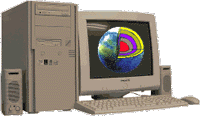



There is a growing need for new, more effective geophysical methods to collect information on underground strata and man-made structures and objects. In many cases the traditional methods and equipment are too expensive, too slow, difficult to use, or technically inadequate to provide such information. Based on a discovery of a certain in-ground acoustic phenomena, the ever-present natural and man-made vibrations can be used to extract subsurface information. The RAP (Resonance Acoustic Profiling) system has been developed to use these phenomena for generating underground imagery, and has been extensively and successfully tested under a variety of conditions and for diverse purposes. The system proved to be effective, easy to use, and, compared to the traditional methods, much faster.
The following are some of the current and potential application of the RAP system: